Revolutions in Time: A Timekeeping Tour of Watson Library
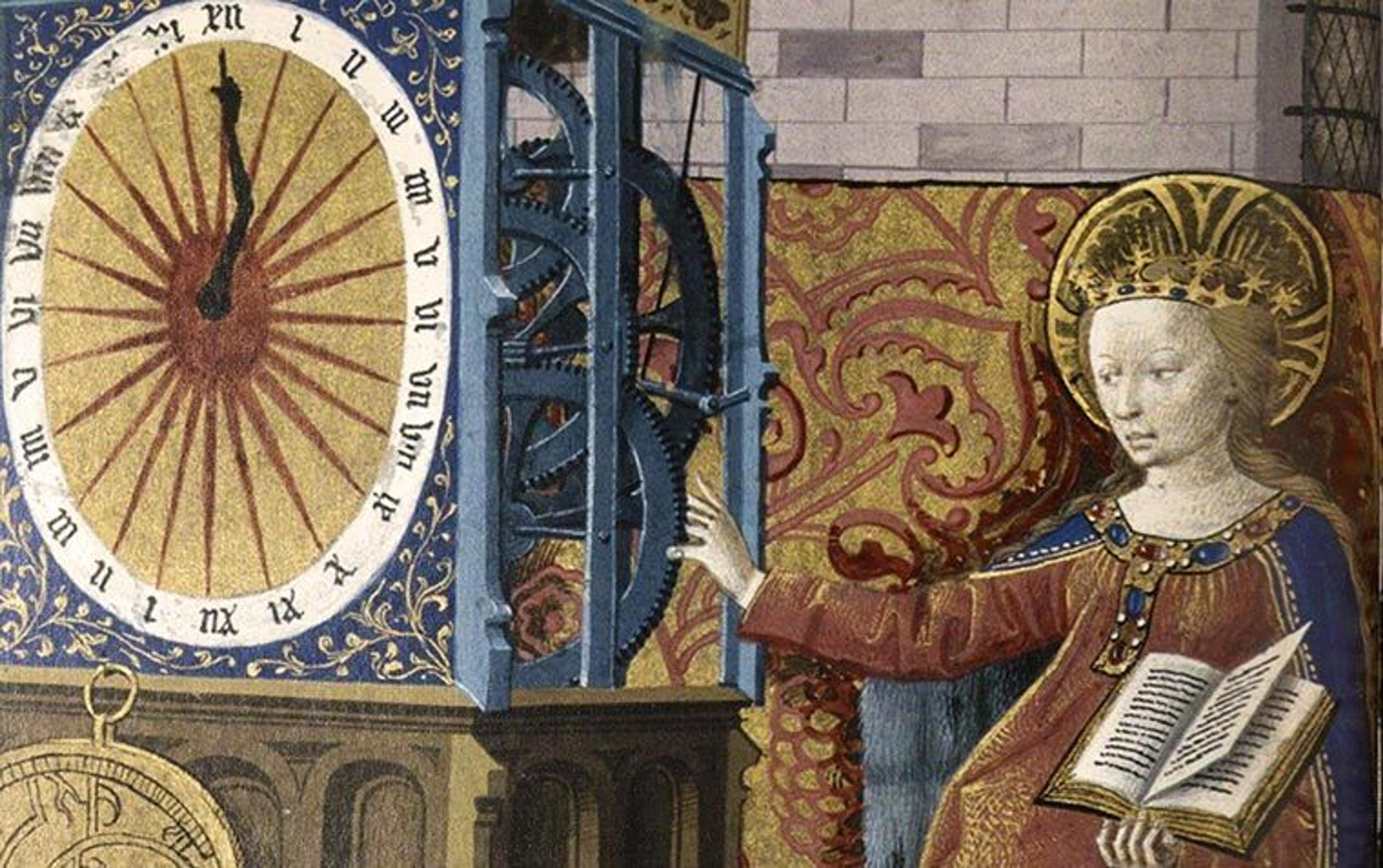
Detail of an illustration from Dominique Fléchon's The Mastery of Time: A History of Timekeeping, from the Sundial to the Wristwatch: Discoveries, Inventions, and Advances in Master Watchmaking (Paris: Flammarion, 2013)
I have always been fascinated by mechanical clocks and watches. Not just how they look, but the way they move and work: the machinations of gears, jewels, and pendulums designed to measure an indefinable concept that is universal to conscious experience and governs much of human existence. In today’s world, an average watch or clock contains not a whirligig of cogs and springs, but plastic, wire, and batteries. However, the tradition of mechanical timepieces, much like architecture or graphic design, occupies a unique space between art and engineering.
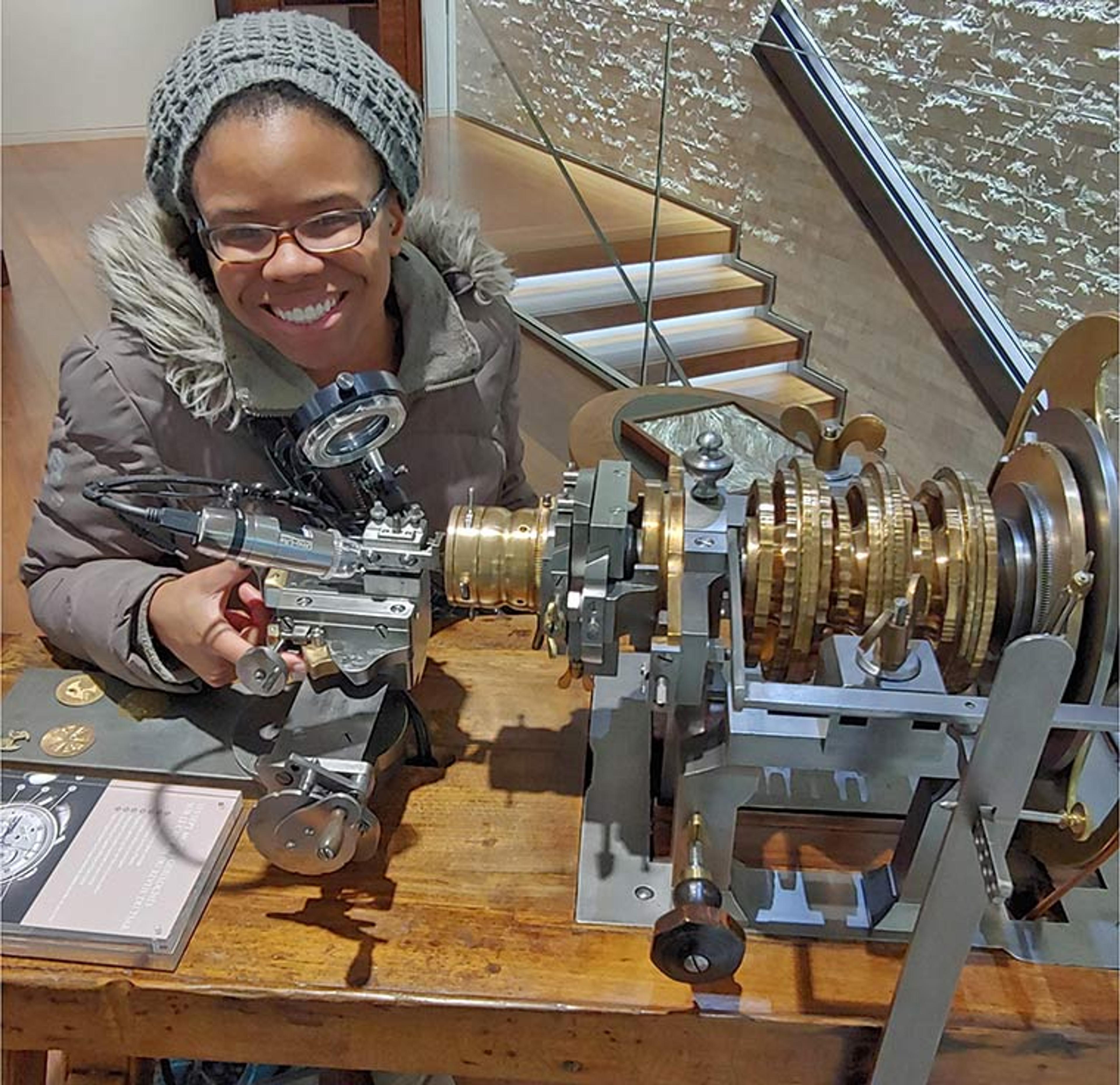
The author tries her hand at a guilloche machine, used to decorate watch faces, at the Breguet Watch Museum in Paris
The term horology is used to describe both the study of time and its measurement, and clock- and watchmakers are generally called horologists. There have been many ways of measuring time, using all manner of methods, forms, and features: tower clocks, longcase ("grandfather") clocks, sundials, chronometers, pocket watches, clock chimes (or watch sonneries), calendar watches, astronomical clocks, minute repeaters, the aggressively American banjo clock, and many, many more. In Watson Library's collection, there's plenty for those wishing to start or continue their horological education. While this post focuses on English language books, there is more for those fluent in French, German, and Chinese.
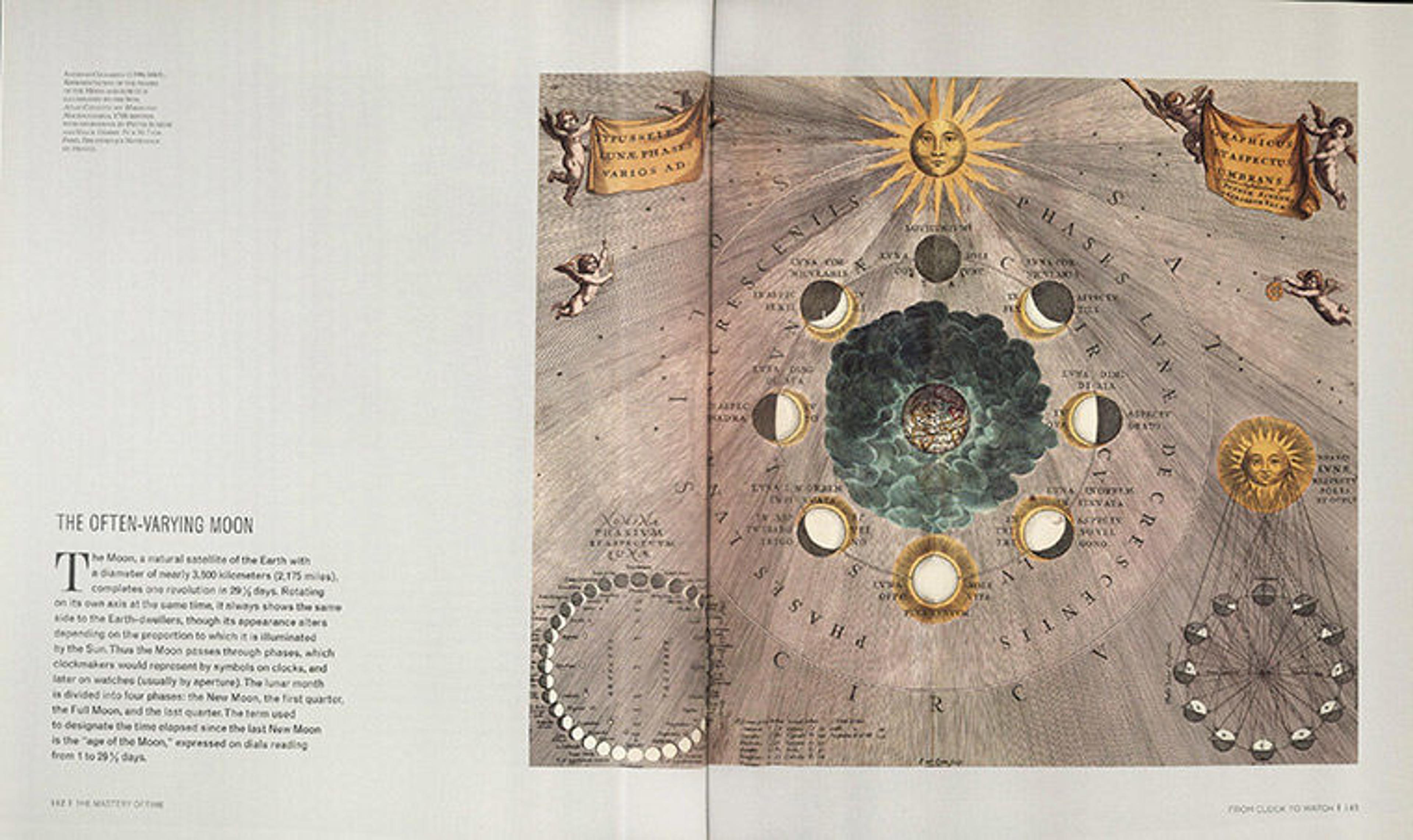
Double-page spread from Dominique Fléchon, The Mastery of Time: A History of Timekeeping, from the Sundial to the Wristwatch: Discoveries, Inventions, and Advances in Master Watchmaking (Paris: Flammarion, 2013)
Dominique Fléchon's Mastery of Time tackles both depth and breadth as it strives to give a comprehensive yet accurate history of horology. It explores historical trends and cultural influences, from technical achievements like marine chronometers to odd tangents like early wristwatch advertisements. Though somewhat lacking in information on non-Western timekeeping, it tells much of the story of how humans got from ancient water clocks to modern Rolexes, with beautiful illustrations as an accompaniment.
If you're not captivated by the details of the mechanics and just want to see some cool, weird, or wonderful timepieces, at least two books in Watson (published 133 years apart) have you covered.
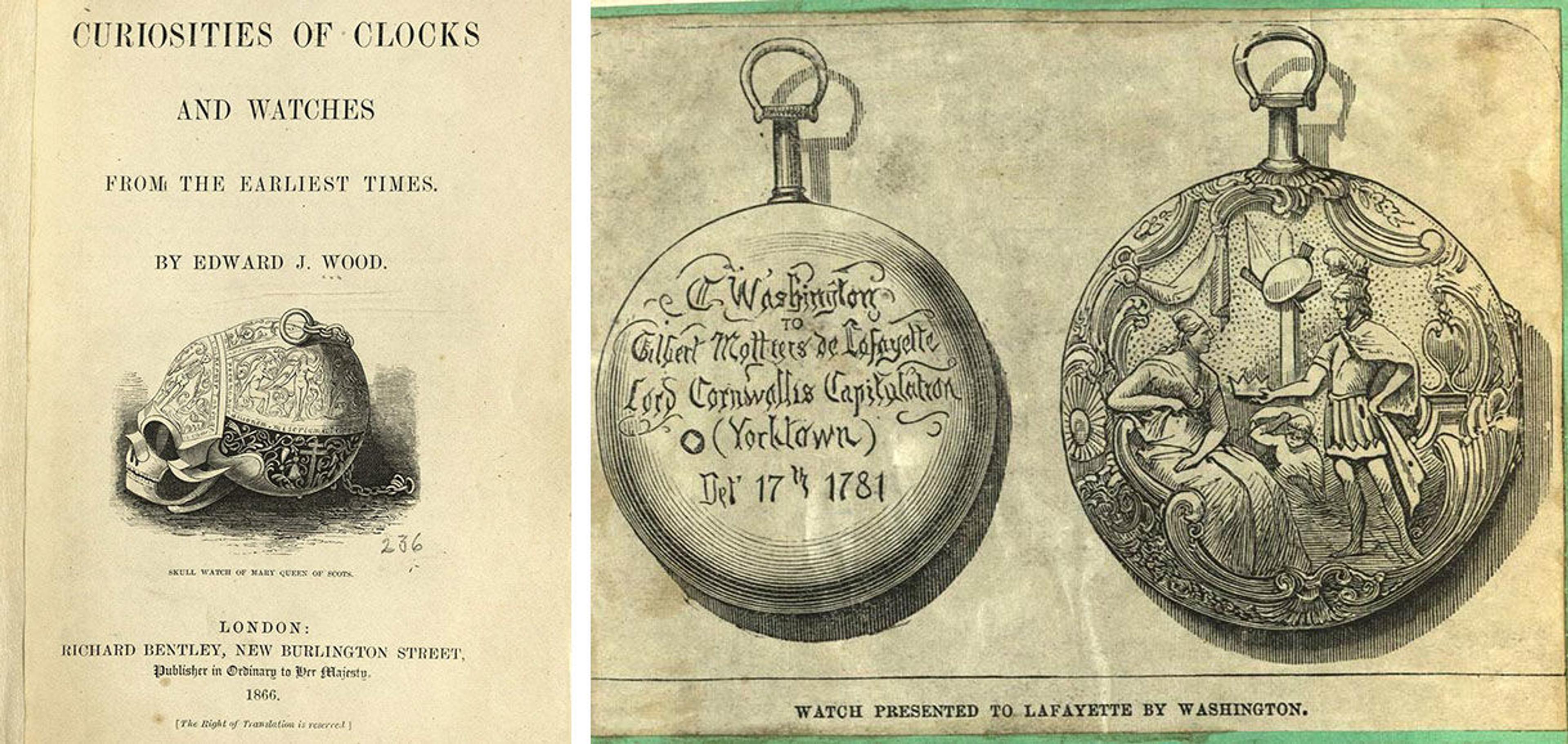
Left: Edward J. Wood, Curiosities of Clocks and Watches, from the Earliest Times (London: R. Bentley, 1866). Right: Illustration of General Lafayette's watch given to him by George Washington
Edward J. Wood's Curiosities of Clocks and Watches was published in 1866 and is a great read for those intrigued by "general description of clocks which do almost everything, including talking, and of watches that chant and converse, and are in the form of skulls, animals, fruits, and flowers." Author Edward J. Wood expounds upon the history of time and famous timepieces as they appear throughout history, whether significant for their technological contributions or, more often, notable because of their owners.

Unusual clocks from Derek Roberts, Mystery, Novelty, and Fantasy Clocks (Atglen, PA: Schiffer, 1999)
Mystery, Novelty, and Fantasy Clocks by Derek Roberts is another collection of bizarre and fantastic clocks, mainly in the European and American tradition. It's one of those books you can open to nearly any page and see something amazing, with clocks that are visually and mechanically exceptional from different eras and makers. The beautiful photographs really make this book notable, and the text is also an enjoyable read for those interested in a lighter version of the history and engineering of clocks.

Salomons, David. Breguet (1747–1823) (London: printed for the author, 1921)
Clocks shaped like skulls are inarguably awesome, but in this librarian's humble opinion, very few timepieces can surpass the elegance and mechanical excellence of a Breguet watch. This 1921 copy of David Salomons's Breguet (1747–1823) is one of only a thousand copies ever produced.

Watson Library bookplate from Breguet

Breguet's famous "Marie Antoinette" watch, completed thirty-four years after her execution
The book includes a biography of iconic watchmaker, Abraham-Louis Breguet, and descriptions and photos of his most unique and important pieces, their original owners, and sale price, where known. Salomons is perhaps the most famous Breguet historian and collector, and this book is a piece of timekeeping history all on its own.
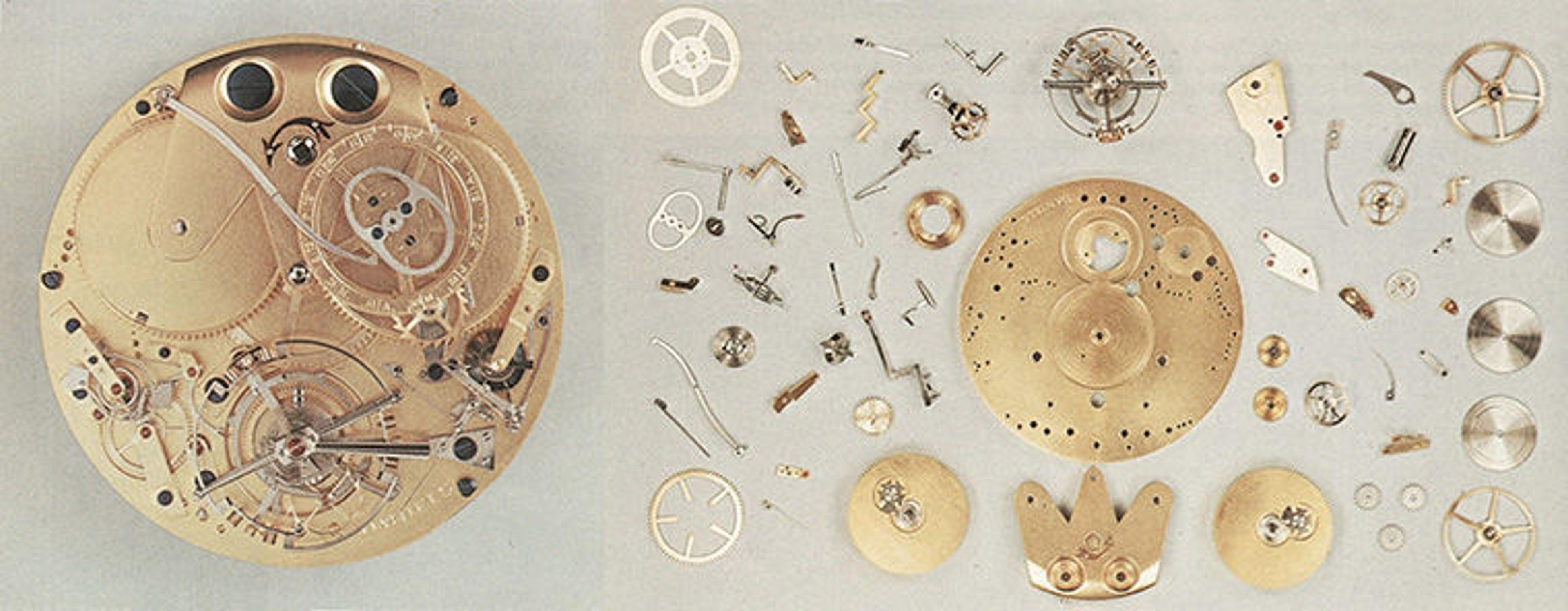
George Daniels, Watchmaking (London: Sotheby's, 1985)
George Daniels's Watchmaking is the definitive book on watchmaking of the twentieth century and not for the idly curious. Drawn from Daniels's vast store of knowledge, it is highly technical, covering every aspect of watchmaking from calculating and crafting the internal mechanisms to decorative elements of dials and cases. Even if you are not fluent in the language of master watchmaking (as I, despite my enthusiasm, am not), it still contains a lot of history and insight that helps one appreciate the astonishing amount of work that goes into something as small as a watch. (Note: There is no glossary in Watchmaking, but The Mastery of Time has a good beginner's glossary, and Watson Library has several watchmakers' dictionaries and handbooks.)
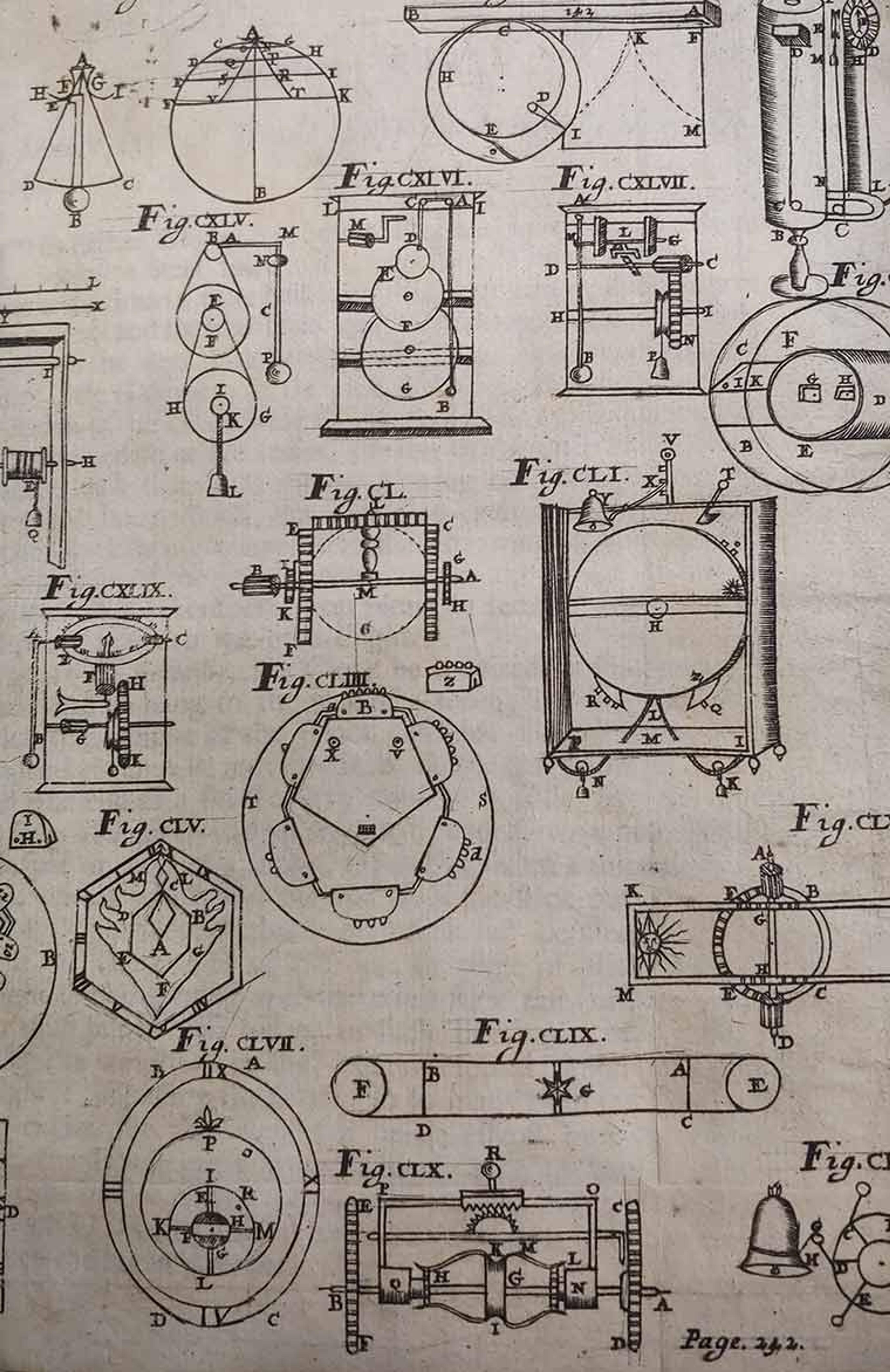
Diagrams from Venterus Mandey and J. Moxon, Mechanick-powers, or, The Mistery of Nature and Art Unvail'd: Shewing What Great Things May Be Perform'd by Mechanick Engines, in Removing and Raising Bodies of Vast Weight with Little Strength, or Force, and Also the Making of Machines, or Engines, for Raising of Water, Draining of Grounds, and Several Other Uses: Together with a Treatise of Circular Motion Artificially Fitted to Mechanick Use, and the Making of Clock-Work and Other Engins: A Work Pleasant and Profitable for All Sorts of Men, from the Highest to the Lowest Degree, and Never Treated of in English but Once Before, and That but Briefly: The Whole Comprized in Ten Books, and Illustrated with Copper Cuts (London: printed for the authors, and sold by Ven. Mandey, [etc.], 1696)]
An interesting counterpart to Daniels masterwork is found in a book series by seventeenth-century mathematicians Venterus Mandey and James Moxon. Over the course of ten books, Mechanick-Powers: Or the Mistery of Nature and Art Unvail'd covers numerous topics regarding motion, forces, and mechanical parts. Watson's copy is comprised of Books IX and X, with Book IX addressed to the issues of "Circular motion artificially fitted to Mechanick Use." There are a handful of books on horology even older than Mechanick-Powers, but few are available in English, something the authors make sure to note in their hilariously long title. These early versions of horological treatises, with mathematical descriptions and diagrams, are the beginning of what appears centuries later in Watchmaking.
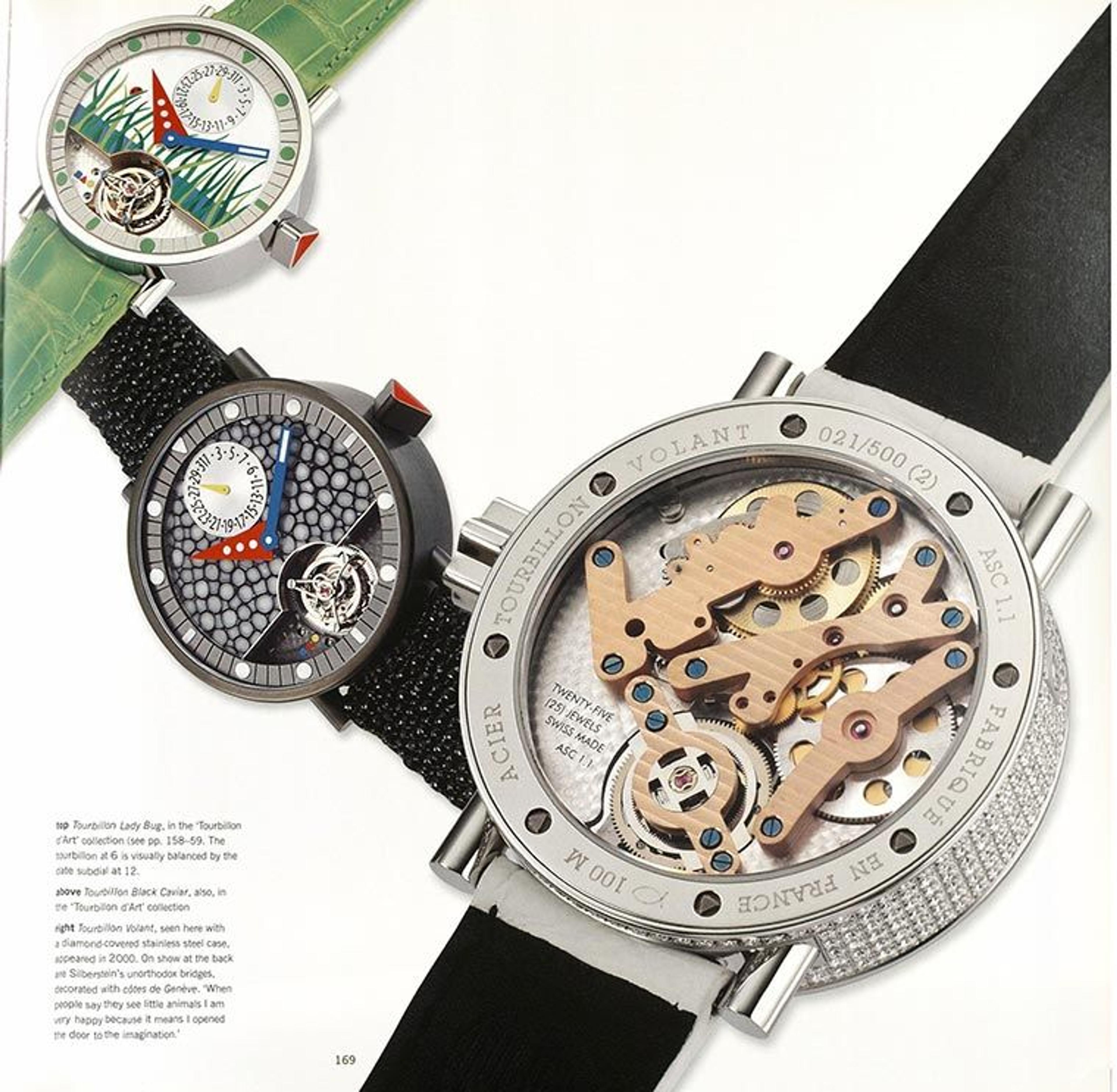
Plate from Michael Clerizo, Masters of Contemporary Watchmaking (London: Thames & Hudson, 2009)
Michael Clerizo's Masters of Contemporary Watchmaking looks to the present and future of the trade. A series of interviews with eleven well-known independent watchmakers, it features stunning photography, background on how these men came to be watchmakers, what inspired them in their work, and how they view their profession. They run the gamut from the sleek and composed Daniels to the unusual and downright outlandish. One thing they all have in common may be their belief in the artistic value of their craft, summed up in this quote by Svend Andersen:
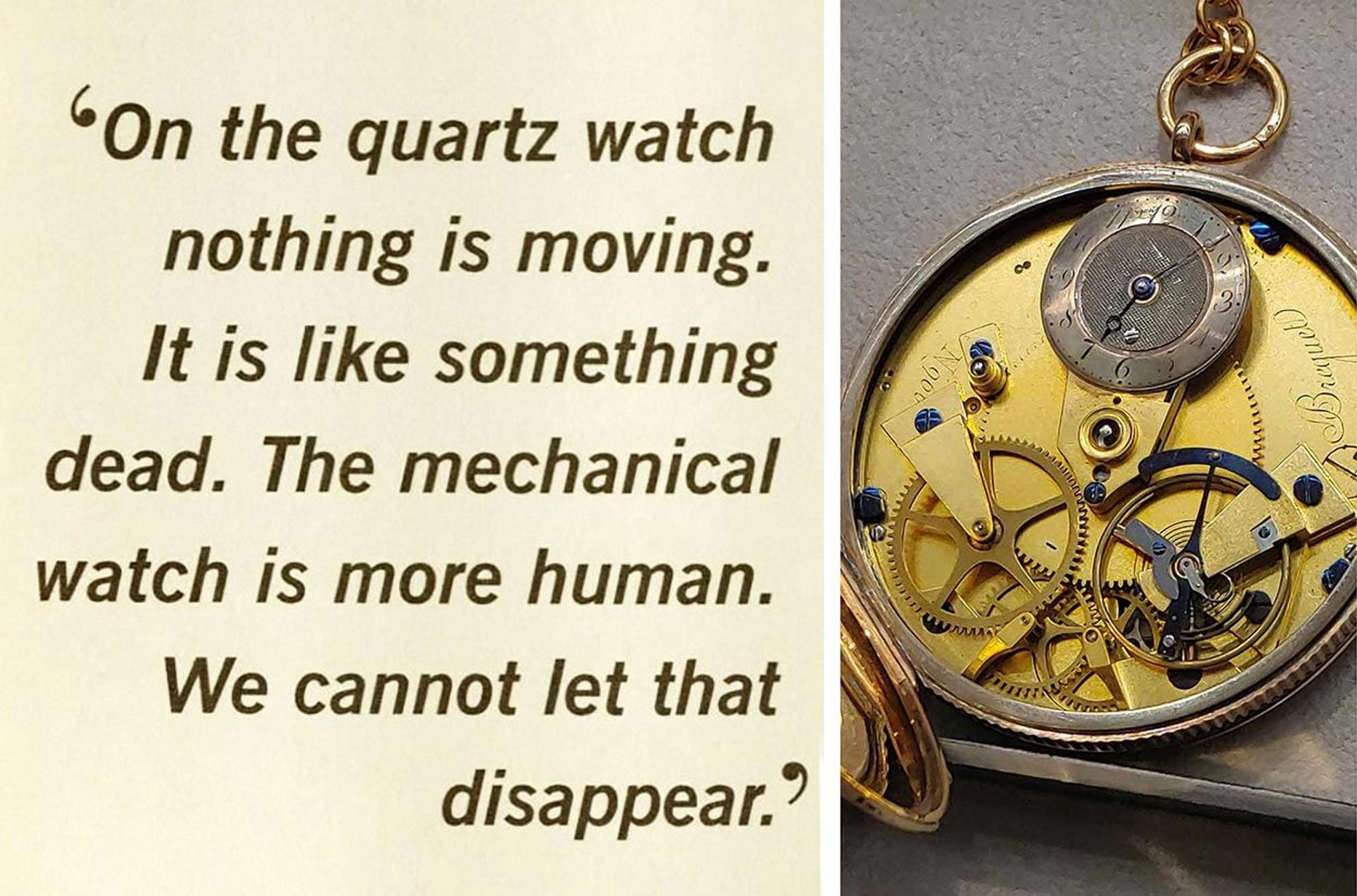
Left: Quotation from Masters of Contemporary Watchmaking. Right: Another photo from the Breguet Museum. Photo by author
Kamaria Hatcher
Kamaria Hatcher is the assistant museum librarian for reader services in Thomas J. Watson Library.